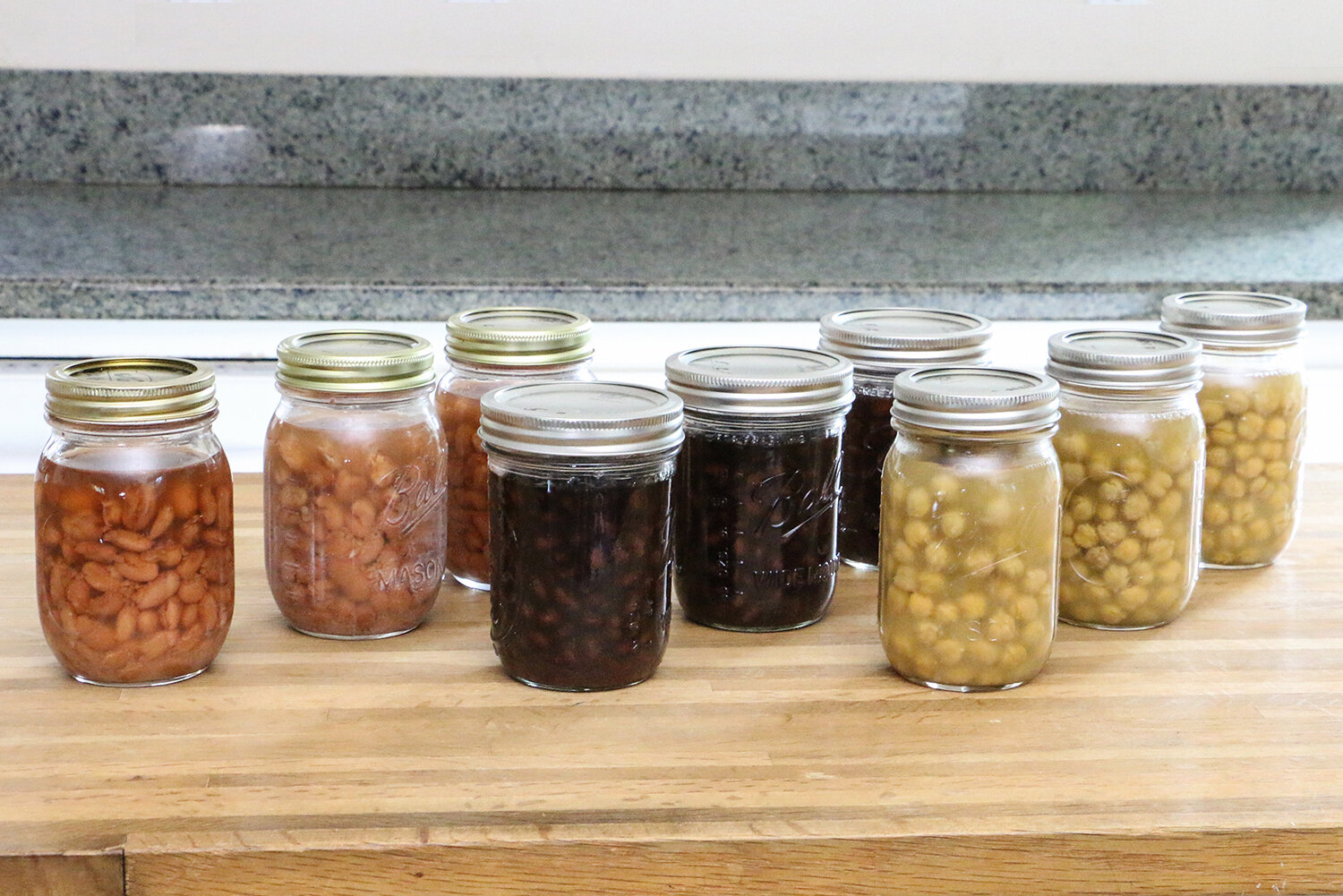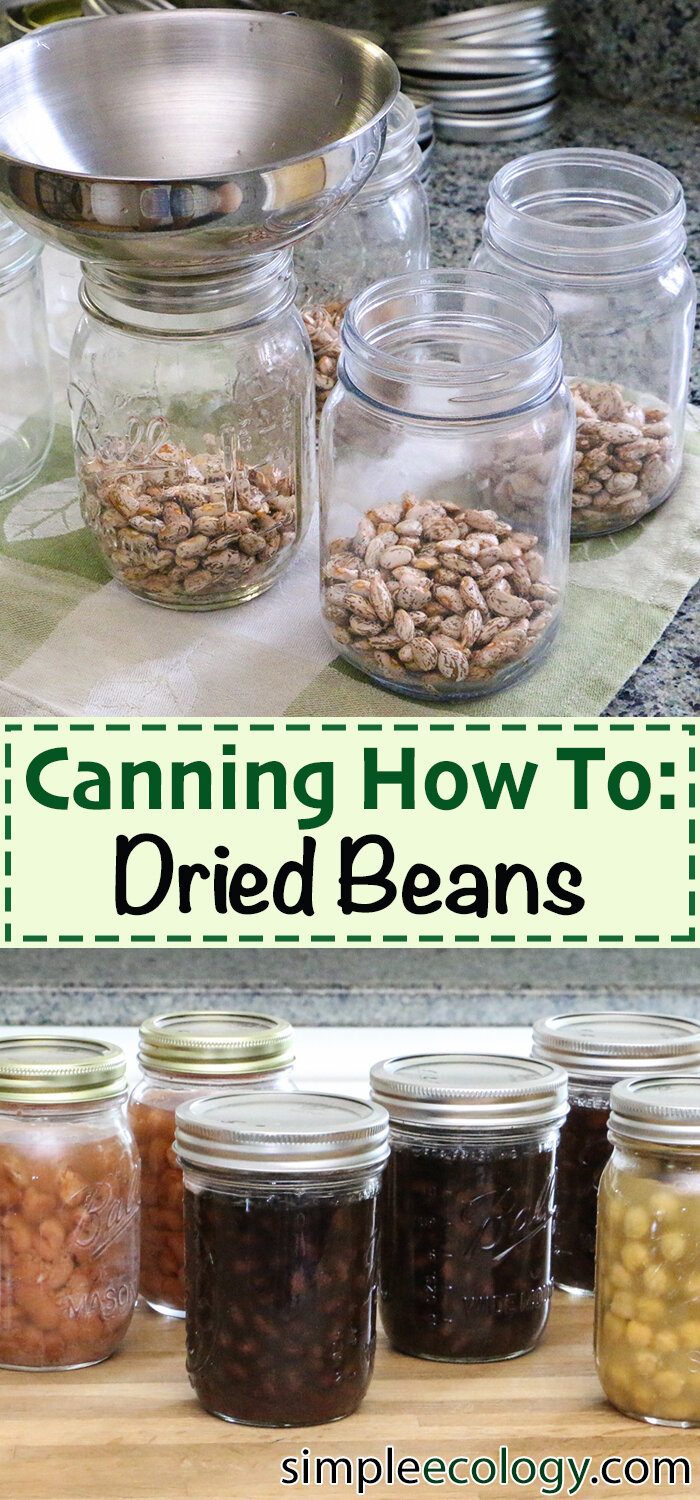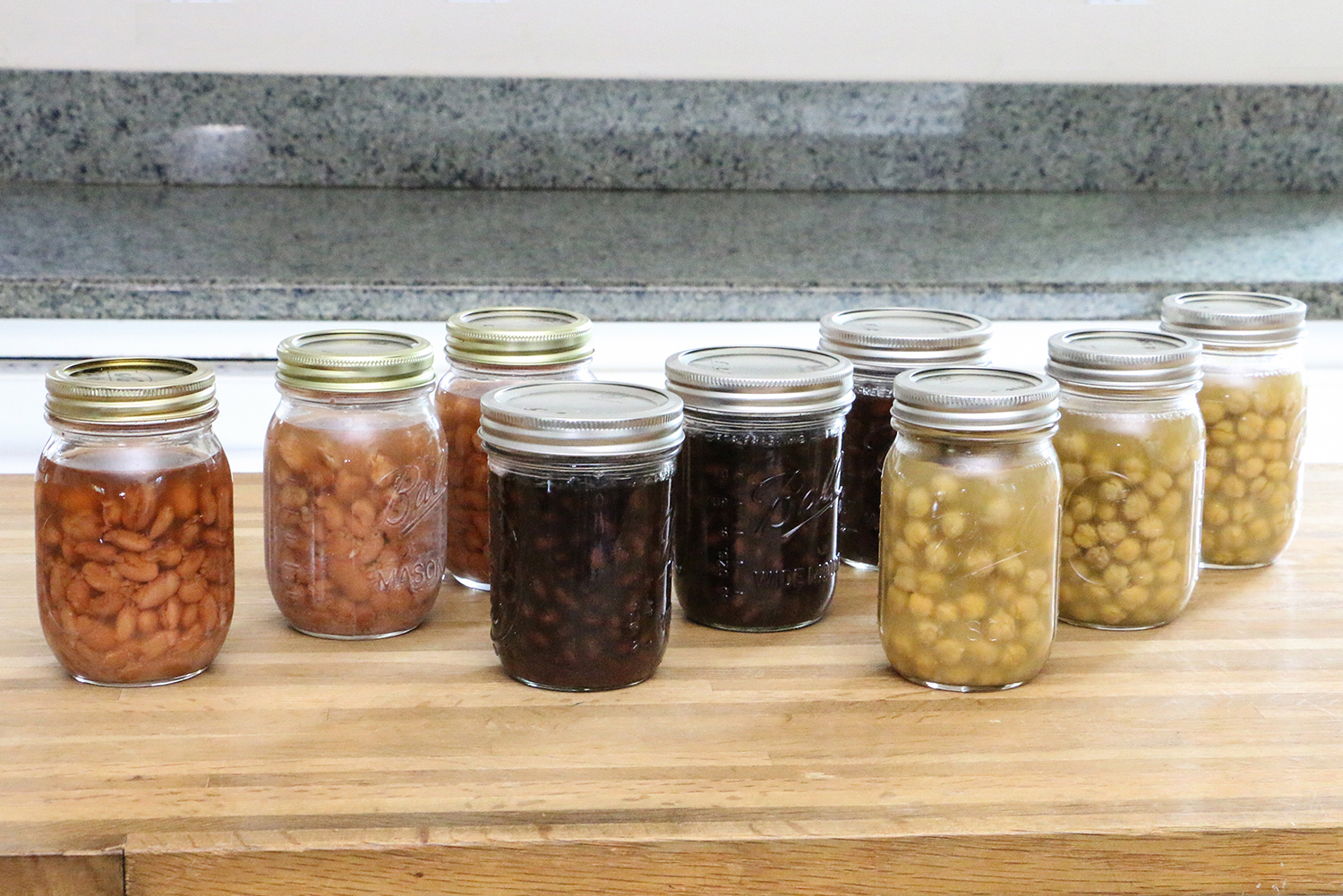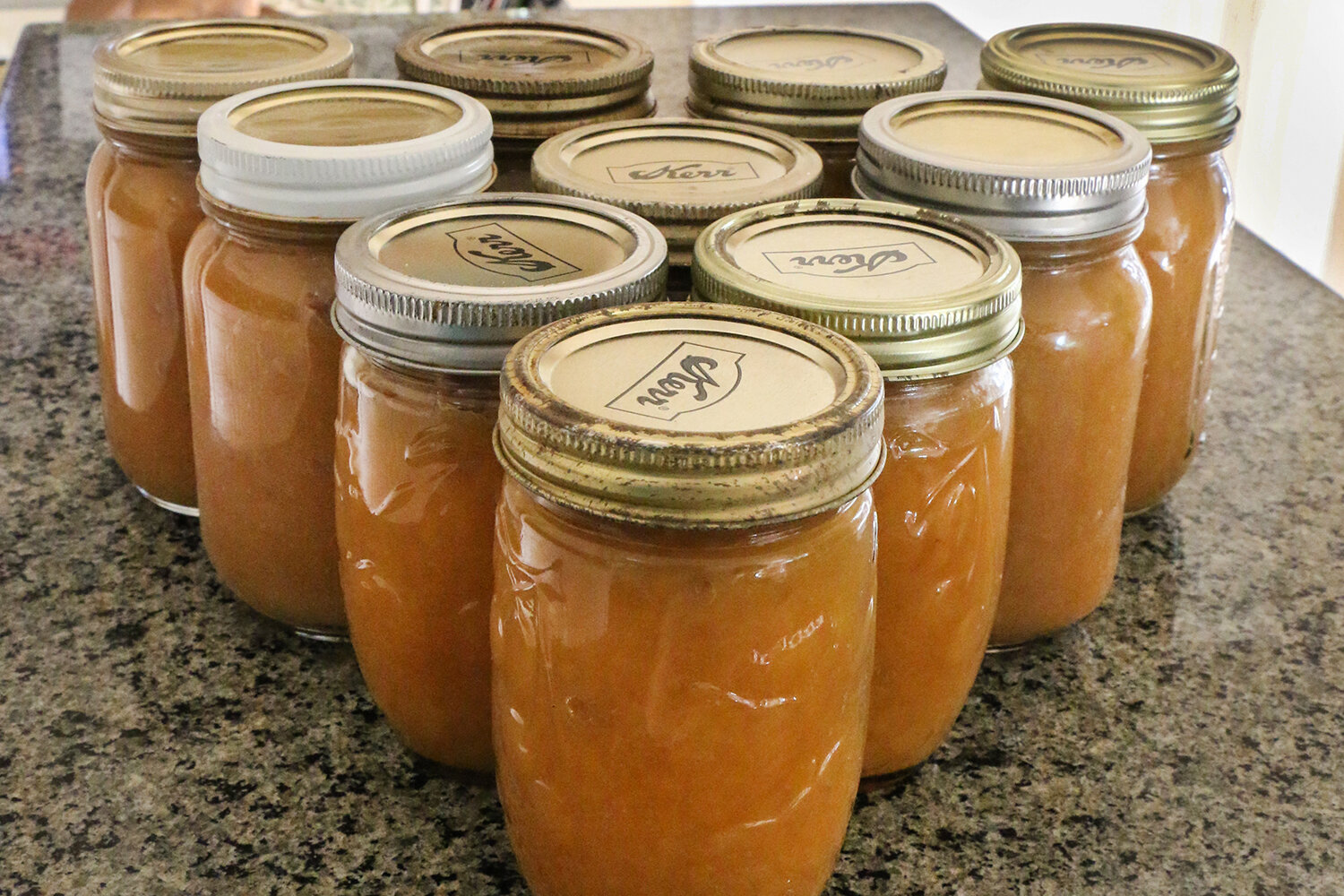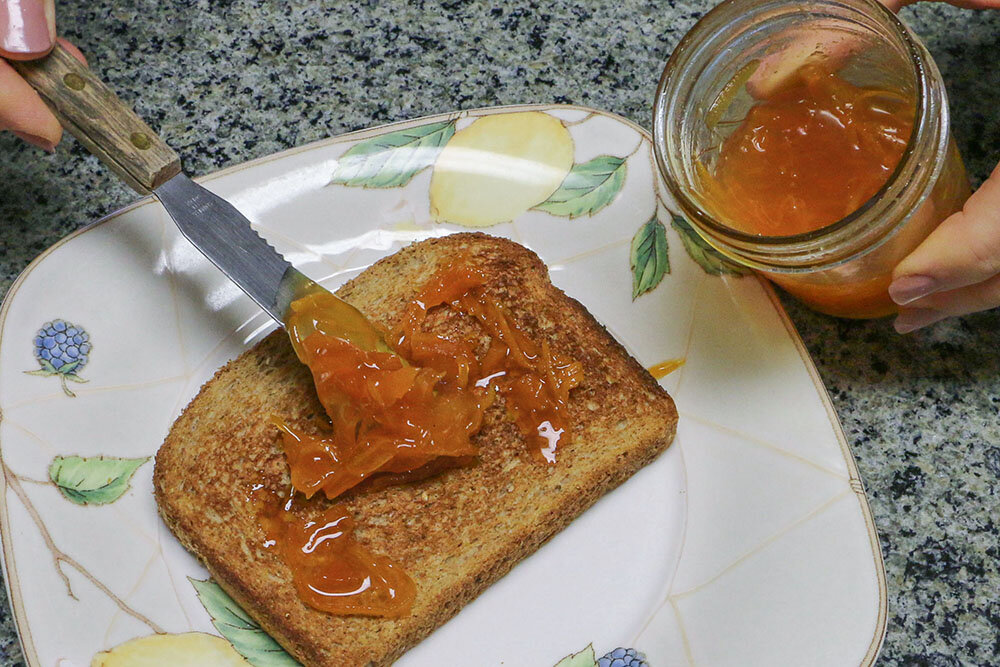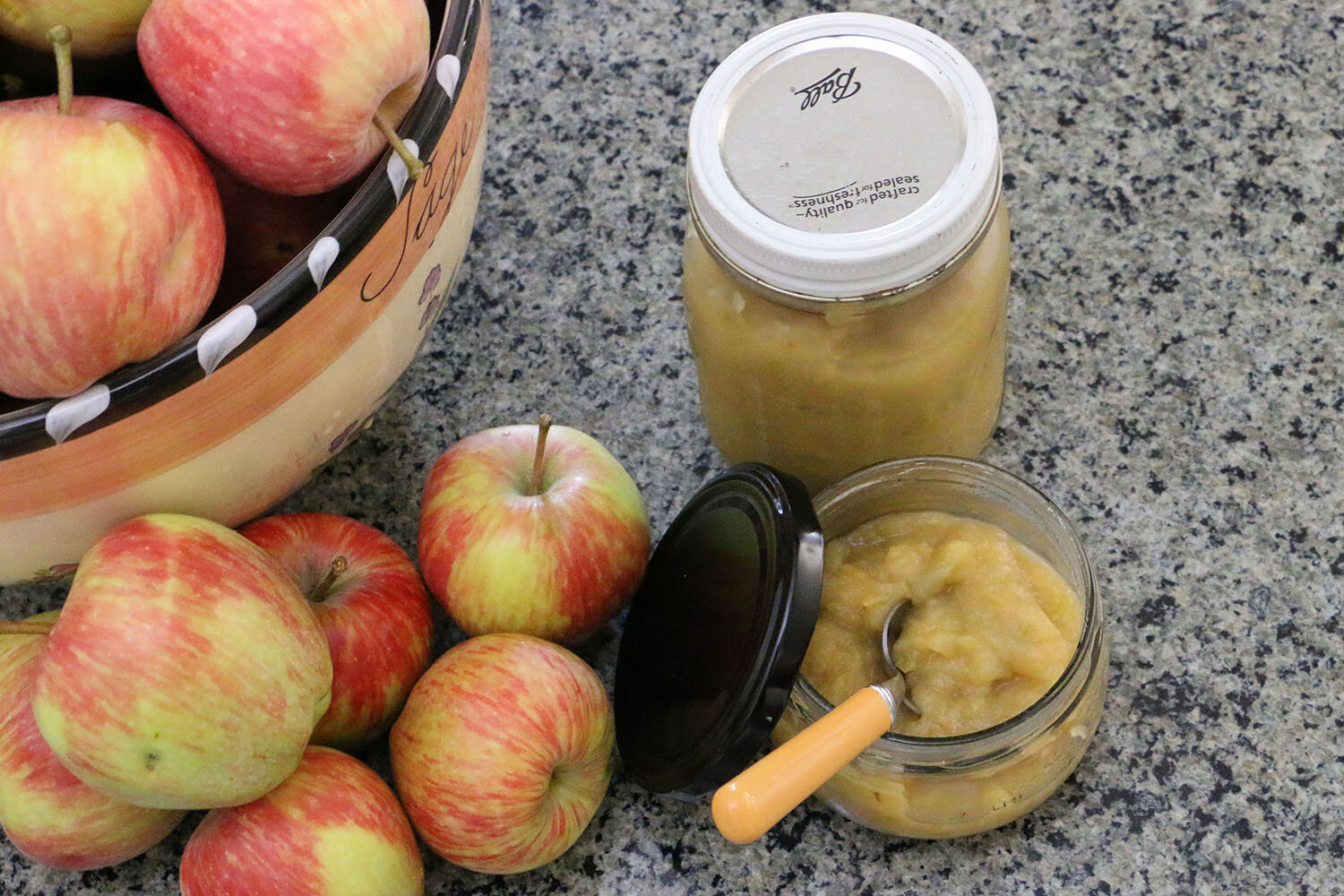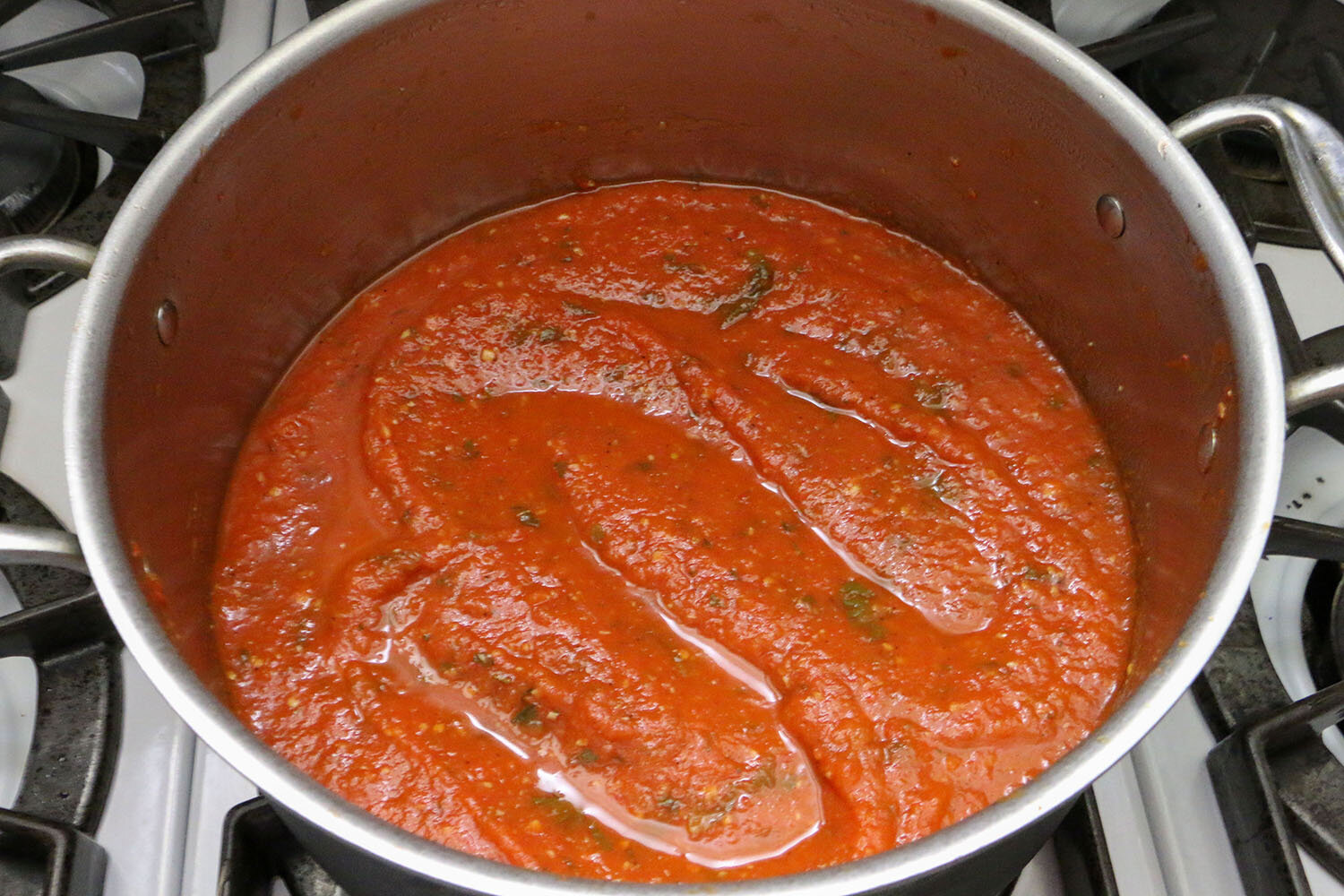Canning How To: Dried Beans
Canning dried beans at home is an easy way to start learning about canning, pressure cooking, and preserving foods. Great with any variety of dried beans, this is a great way to save money and recyclables, as well as a delicious way to spice up your home cooking. Try them in anything from soup and stews, to burritos, to Homemade 3 Bean Chili.
Disclaimer: This method is not approved by the USDA as a safe method for canning dry beans. They state that beans should be boiled or soaked overnight prior to canning. We personally believe that soaking results in a mushier texture and prefer canning unsoaked beans for a firmer texture once canned. Many other blogs recommend this method, but of course do not use these instructions if you are at all uncomfortable with the non-FDA approved canning method.
ENVIRONMENTAL BENEFITS OF CANNING BEANS
Buying dried goods in bulk with Reusable Bulk Bin Bags and canning yourself can significantly cut down on the carbon emissions caused by food transportation of jarred and canned goods
Homemade canned goods are wonderful (and delicious) low-waste gift to give to family & friends, to keep for emergency food rations, or to make cooking a weekday meal quick & easy
Buying pre-packaged and convenience food from fast food chains or grocery stores promotes the use of single use containers, utensils, napkins, and more that’ll end up in landfills and oceans, whereas making the same meal at home makes single use items obsolete
Canning How To: Dried Beans
Prep time: 15 minutes
Cook time: 1 hour - 1 1/2 hours
Cool time: 6 - 12 hours
Ingredients:
(Per Pint Can)
- ½ cup dried beans
- 1 cup water
Optional:
- ½ tsp salt
Tools:
- Large Pot
- Small Saucepan
- Canning Funnel
- Wooden Skewer
- A Few Dish Towels
- Small Tongs
- Canning Lifter
- Ladle
- Kettle
- Strainer
- Canning Jars
- Canning Rings
- Canning Lids (must be new/unused)
- Pot Holders or Heat Gloves
Instructions:
1. READ INSTURCTIONS: Before you start using a pressure cooker, it’s very important to know how yours works, as directions differ between models and brands, and altitude of canning. Read the instructions for your cooker, and know that specific times or PSI (pounds per square inch) from this recipe may change based on your cooker and it’s instructions. Additionally, check how many jars will fit into your pressure cooker at one time, this will be how many jars you should boil and fill.
2. SANITIZE: Before starting the canning process, you have to prepare all of the jars that you will be canning into. Wash all of the jars with hot soapy water, making sure to thoroughly clean each. Do the same with the rings and lids, drying them off and placing them near the stove for easy access.
3. BOIL: Fill both the large pot and small saucepan halfway full with water, placing both on the stove. In the large pot, place in as many jars as you can fit in one layer, around 6 or 7, making sure that each is upright, fully submerged, and with no air pockets trapped inside. In the small saucepan, place in the same amount of canning lids as jars, making sure that each is laying with the rubber side up, and no two lids are directly on top of one another. Bring the large pot to a boil, along with bringing the small saucepan and a filled kettle to a simmer.
4. PREP: In the area you plan on canning, clear off a large working space. At a sink, place down a few towels onto the countertop, this will protect both the hot jars and your countertop from cracking from rapid heat change. Next to those, prepare the workspace by getting your tools nearby (canning funnel, strainer, dried beans, wooden skewer, small tongs, canning lifter, ladle, canning rings, & pot holders).
5. REMOVE JARS: Once your kettle and pots are at temperature, you are ready to can! With the canning lifter, carefully take a boiled jar out of the pot, carefully dumping out all of the water inside, then place it onto the toweled work surface.
6. FILL: Measure out ½ cup of dried beans, place them into your strainer, and rinse them off thoroughly. Shake off any excess water, and using the funnel, place all the beans into one jar. Continue this process until all your boiled jars are filled with beans. With your kettle, fill each jar with the boiled water, leaving about ¾ inch at the top empty. Add in salt if desired, and with the wooden skewer stir the beans around. With the small tongs, grab a lid out the saucepan and place it on the towel. Wipe off the rim of the jar with a towel, then place on a lid and screw on a jar ring tight. Set it to the side, and repeat this for the remaining jars.
7. PRESSURE COOK: Once all the jars have been filled, pour about 1 ½ inches of water into the bottom of your pressure cooker, add in the spacer to elevate your jars, and place them inside. Close the lid of your cooker, locking it into place, and turn on your stove to a medium-high heat. Keeping an eye on the pressure gauge, allow the cooker to reach 10 PSI, and lower the heat slightly to keep it there for 75 minutes (check cooker instructions as these may vary slightly).
8. COOL: After the cooking time is up, turn heat off and allow the cooker to FULLY depressurize. This may take up to an hour, but be patient, making sure that the pressure gauge is at zero before removing the lid of your cooker. Carefully remove the jars from the cooker with a canning lifter, place them onto the towels, and leave them to cool completely for a few hours. After a few minutes, the jars should begin to make a popping sound, ensuring that there is a vacuum seal inside. If any of the jars have not popped after they have fully cooled, that jar should be refrigerated and eaten first, as it will not have been properly preserved.
Notes:
Safety First — When working with liquids at a very high temperature, and it’s extremely important to remember how to handle these materials safely when canning. Be careful of splashing boiling water and handling hot items like jars & lids. It’s also important to remember that quick changes in temperature can cause glass to shatter, so make sure that jars are properly heated before adding hot jellies or sauces, and that work surfaces are covered to prevent damage. Pressure cookers should not be left unattended while on the stove. Be sure that the cooker is never opened while pressurized, and that steam escaping from safety valves will be extremely hot . Homemade Aquafaba – If you canned dried garbanzo beans, be sure to strain off and save the liquid from the can. This aquafaba is an amazing ingredient that can add structure and fluffy texture to homemade baked goods, and is an amazing vegan substitute for eggs. It does go bad quickly though, so be sure to use it within a few days of opening the jar. USDA Disclaimer – Please know that this method of canning beans dry rather than soaking overnight is not recommended by the United States Department of Agriculture (USDA). We personally prefer canning unsoaked bean, but please follow the recommendations of the USDA if you prefer.

Did you make this recipe?
We love to see your pictures!
Tag @simple_ecology and hashtag it #simpleecology
© Simple Ecology

